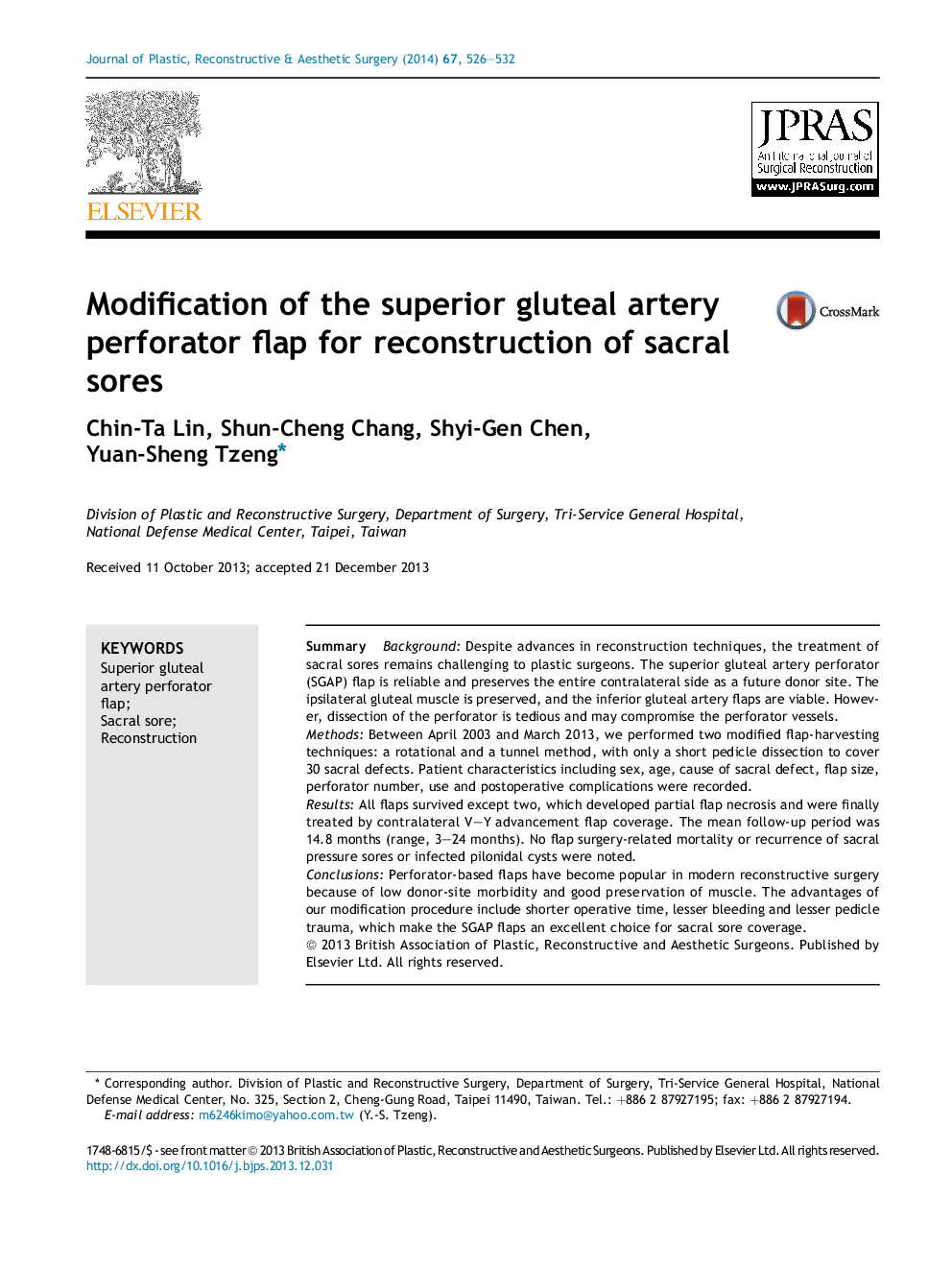| Article ID | Journal | Published Year | Pages | File Type |
|---|---|---|---|---|
| 4117882 | Journal of Plastic, Reconstructive & Aesthetic Surgery | 2014 | 7 Pages |
SummaryBackgroundDespite advances in reconstruction techniques, the treatment of sacral sores remains challenging to plastic surgeons. The superior gluteal artery perforator (SGAP) flap is reliable and preserves the entire contralateral side as a future donor site. The ipsilateral gluteal muscle is preserved, and the inferior gluteal artery flaps are viable. However, dissection of the perforator is tedious and may compromise the perforator vessels.MethodsBetween April 2003 and March 2013, we performed two modified flap-harvesting techniques: a rotational and a tunnel method, with only a short pedicle dissection to cover 30 sacral defects. Patient characteristics including sex, age, cause of sacral defect, flap size, perforator number, use and postoperative complications were recorded.ResultsAll flaps survived except two, which developed partial flap necrosis and were finally treated by contralateral V–Y advancement flap coverage. The mean follow-up period was 14.8 months (range, 3–24 months). No flap surgery-related mortality or recurrence of sacral pressure sores or infected pilonidal cysts were noted.ConclusionsPerforator-based flaps have become popular in modern reconstructive surgery because of low donor-site morbidity and good preservation of muscle. The advantages of our modification procedure include shorter operative time, lesser bleeding and lesser pedicle trauma, which make the SGAP flaps an excellent choice for sacral sore coverage.
